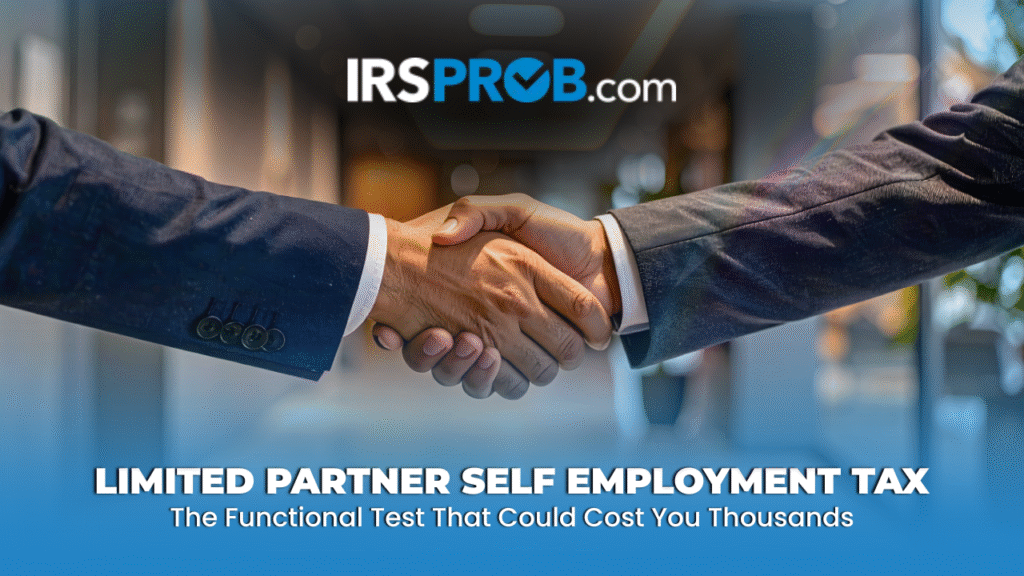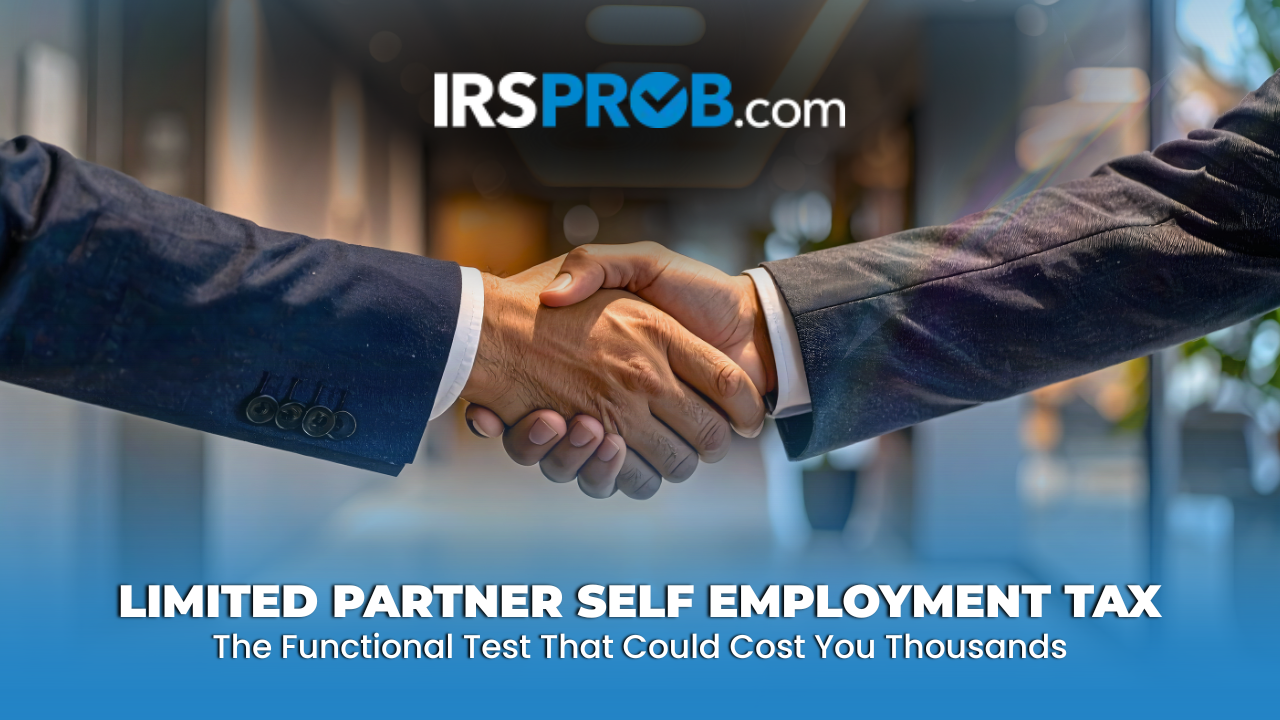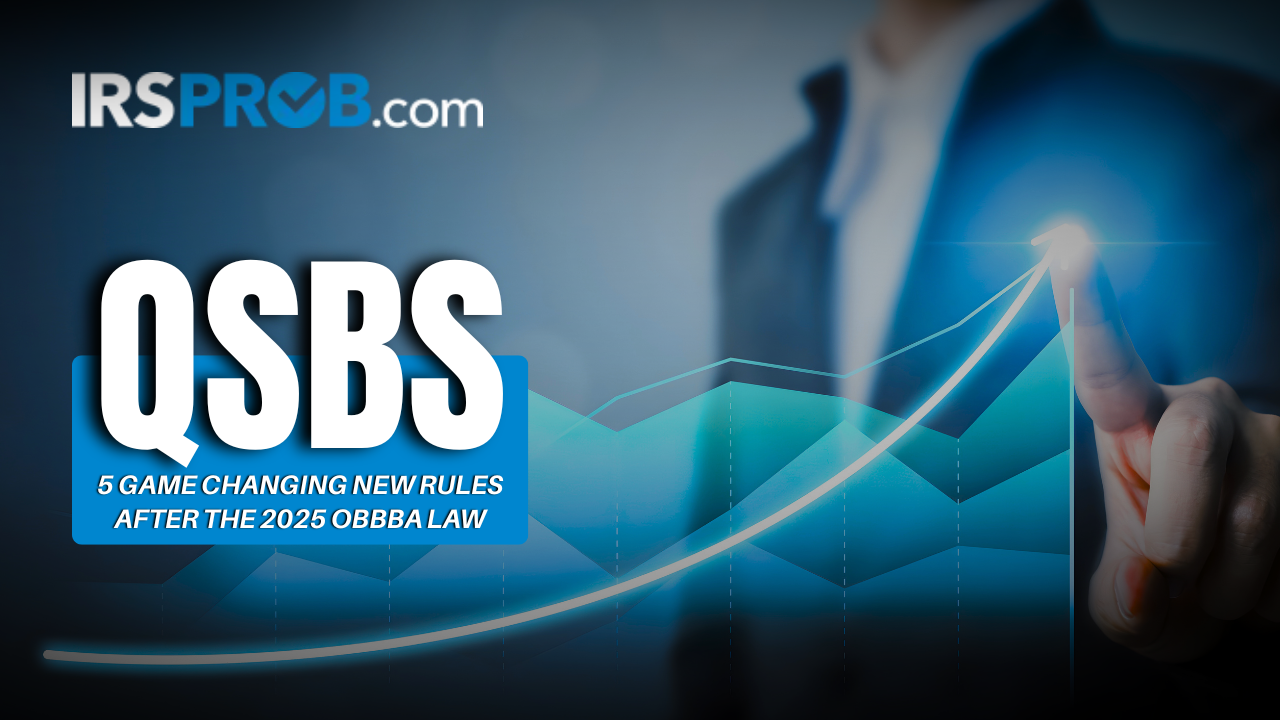
Imagine discovering that your partnership structure, carefully designed to avoid self-employment tax, is now under IRS scrutiny. Your accountant assured you that limited partners escape the 15.3% self-employment tax burden. But recent Tax Court rulings have shattered that assumption, leaving countless business owners facing unexpected tax bills exceeding six figures.
The IRS has unleashed an aggressive compliance campaign targeting limited partner self-employment tax exceptions. Since 2018, tax authorities have collected billions in previously unclaimed self-employment taxes from partners who believed their limited partner status protected them. The weapon of choice? A functional test that ignores state law classifications and examines how partners actually operate within their businesses.
Understanding this functional test is not optional for anyone holding a limited partnership interest. The stakes are enormous, and the rules have fundamentally changed.
What Makes Limited Partner Self Employment Tax Different from Regular Partnership Tax
Self-employment tax represents a significant financial obligation for business owners. The rate hits 15.3% on the first $168,600 of income in 2024, then drops to 2.9% until reaching $200,000 for single filers or $250,000 for married couples, after which it climbs to 3.8%. Half of this amount is deductible, but the burden remains substantial. For more details, see the IRS self-employment tax overview.
For decades, limited partners enjoyed an exemption under Section 1402(a)(13) of the Internal Revenue Code. This provision excluded limited partner distributive shares from self-employment tax calculations. Only guaranteed payments for services rendered faced taxation. This created an attractive planning opportunity for professionals and business owners seeking to minimize their limited partner self-employment tax exposure.
The traditional understanding was straightforward. General partners paid self-employment tax on their entire distributive share of partnership income. Limited partners paid self-employment tax only on guaranteed payments. This distinction drove countless business structuring decisions across industries from law firms to hedge funds to real estate partnerships.
The Soroban Case Revolutionized Limited Partner Self Employment Tax Analysis

Photo by Wesley Tingey on Unsplash
Everything changed with Soroban Capital Partners LP v. Commissioner in November 2023. The Tax Court rejected the argument that state law limited partnership designations automatically qualify partners for the self-employment tax exemption. Instead, the court mandated a functional analysis examining whether partners truly operate as passive investors or as active business participants.
Soroban involved a Delaware limited partnership operating as a hedge fund that did not report its limited partners' distributive share allocations as net earnings from self-employment. The IRS challenged this position, arguing that simply holding a limited partner title does not guarantee exemption from limited partner self-employment tax obligations.
The Tax Court sided with the IRS, establishing that courts must apply a functional test to determine limited partner status for self-employment tax purposes. This represented the first time such analysis applied to state law limited partnerships, though courts had previously used similar reasoning for limited liability companies and limited liability partnerships.
How The Functional Test Determines Limited Partner Self Employment Tax Liability
The functional test examines substance over form. Courts ask whether partners:
- Bear personal liability for partnership debts
- Hold authority to contract for the partnership
- Participate in the partnership's trade or business for more than 500 hours during the taxable year
These factors, drawn from proposed Treasury Regulations issued in 1997 but never finalized, now guide judicial analysis of limited partner self-employment tax cases.
Recent court decisions describe this as a comprehensive inquiry seeking to determine whether partners were generally akin to passive investors. Partners who function as active and fundamental contributors to partnership operations face disqualification from the limited partner self-employment tax exception, regardless of what their partnership agreements state.
The Denham Capital Management case in December 2024 demonstrated how courts apply this functional analysis in practice. The Tax Court determined that five partners were active and fundamental contributors rather than passive investors, making them ineligible for the limited partner self-employment tax exception. All their income from Denham became subject to self-employment tax.
Industries Most Vulnerable to Limited Partner Self Employment Tax Audits

Photo by Christopher Burns on Unsplash
The IRS launched its self-employment tax compliance campaign in 2018, focusing attention on private equity firms, hedge funds, limited liability companies, limited liability partnerships and limited liability limited partnerships. These industries structured their operations specifically to maximize the limited partner self-employment tax benefits, making them prime audit targets.
Professional Service Partnerships
Professional service partnerships face particular scrutiny. Law firms, accounting practices, medical groups and consulting businesses often organize as partnerships with limited and general partnership interests. Partners providing substantial professional services to these firms risk losing their limited partner self-employment tax exemptions under functional analysis.
Real Estate Partnerships
Real estate partnerships also encounter challenges with the functional test. Partners actively involved in property management, development decisions or investor relations may fail the passive investor standard required for limited partner self-employment tax exclusion. The hours test proves especially problematic, as 500 hours of participation annually triggers disqualification.
Practical Steps To Protect Your Limited Partner Self Employment Tax Position
Documentation is Critical
Documentation becomes critical under functional analysis standards. Partnerships must maintain detailed records showing limited partners truly function as passive investors. This includes tracking participation hours, documenting decision making authority limitations, and demonstrating that limited partners lack contractual authority binding the partnership.
Guaranteed Payments Require Careful Calibration
Guaranteed payments require careful calibration. Partners providing services should receive adequate guaranteed payments subject to limited partner self-employment tax rather than claiming all income qualifies for exemption. Courts view inadequate guaranteed payments as evidence that limited partners are not truly passive investors deserving exemption.
Partnership Agreements Need Restructuring
Partnership agreements need restructuring to reflect functional realities. Simply designating someone as a limited partner provides no protection if their actual role contradicts that classification. Agreements should clearly define limited partner roles, restrict their management authority, and prevent them from exceeding 500 hours of annual participation.
Consider Alternative Structures
Alternative structures merit consideration. S corporations avoid self-employment tax on distributions, though they face other limitations. Multi-tiered partnership structures can segregate active and passive interests more clearly. Each approach carries tradeoffs requiring careful analysis with experienced tax advisors.
What Happens When the IRS Challenges Your Limited Partner Self Employment Tax Position

Photo by Towfiqu barbhuiya on Unsplash
Following the $80 billion funding authorized by the Inflation Reduction Act, the IRS announced increased enforcement efforts targeting wealthy taxpayers and complex partnerships. Expect more audits examining limited partner self-employment tax reporting in coming years. The agency views this as a significant source of uncollected revenue.
Building Your Audit Defense
Audit defense requires marshaling facts demonstrating passive investor status. This includes participation logs, communications showing limited involvement in management decisions, and evidence that the partner's relationship to the partnership mirrors traditional limited partners investing for returns rather than actively managing operations.
Settlement Negotiations
Settlement negotiations may prove unavoidable in marginal cases. The IRS has secured multiple victories applying functional analysis, giving them confidence in their position. Partnerships facing audits should evaluate their exposure realistically and consider whether negotiated resolutions beat prolonged litigation with uncertain outcomes.
Appeals to Circuit Courts
Appeals to Circuit Courts remain active. Sirius Solutions appealed to the Fifth Circuit, which heard oral arguments in February 2025. These appellate decisions may provide additional clarity, though current Tax Court precedent favors the IRS position across multiple cases.

Photo by Jakub Żerdzicki on Unsplash
The Future of Limited Partner Self Employment Tax Regulation
Treasury included guidance under Section 1402(a)(13) in its 2023-2024 Priority Guidance Plan, suggesting new regulations may emerge. Until then, the proposed 1997 regulations and recent court decisions provide the most reliable guidance for evaluating limited partner self-employment tax exposure.
The landscape continues evolving rapidly. Multiple cases remain pending in Tax Court, and appellate courts have not yet issued definitive rulings. Partnerships relying on limited partner self-employment tax exceptions must monitor developments closely and reassess their positions as new guidance emerges.
Key Takeaway: Planning proactively beats reacting to audit notices. Review your partnership structure now with qualified tax advisors. Evaluate whether your limited partners truly function as passive investors under the standards courts apply. Make necessary adjustments before the IRS makes them for you, along with penalties and interest.
The days of automatic limited partner self-employment tax exemptions have ended. Only partners genuinely operating as passive investors will survive functional analysis scrutiny. Everyone else needs to adapt their structures, increase their guaranteed payments, or prepare to pay substantially more in self-employment taxes moving forward.
Your Next Move
The IRS isn't bluffing about its enforcement priorities. With billions of dollars in potential tax revenue at stake, limited partner self-employment tax has become a top audit target. If your partnership structure relies on the limited partner exemption, you need to act now.
The functional test has fundamentally changed the rules. What worked five years ago may expose you to substantial liability today. Waiting until you receive an audit notice is too late.
If you're a limited partner concerned about your self-employment tax position, you need professional guidance from tax attorneys who understand the latest court decisions and IRS enforcement strategies. Don't gamble with your financial future based on outdated advice.
Whether you're facing an audit, need to restructure your partnership, or want to evaluate your exposure before problems arise, IRSProb.com provides the experienced representation you need. Our tax professionals specialize in complex partnership tax issues and can help you navigate this rapidly evolving area of tax law.
Get Expert Tax Help Now





